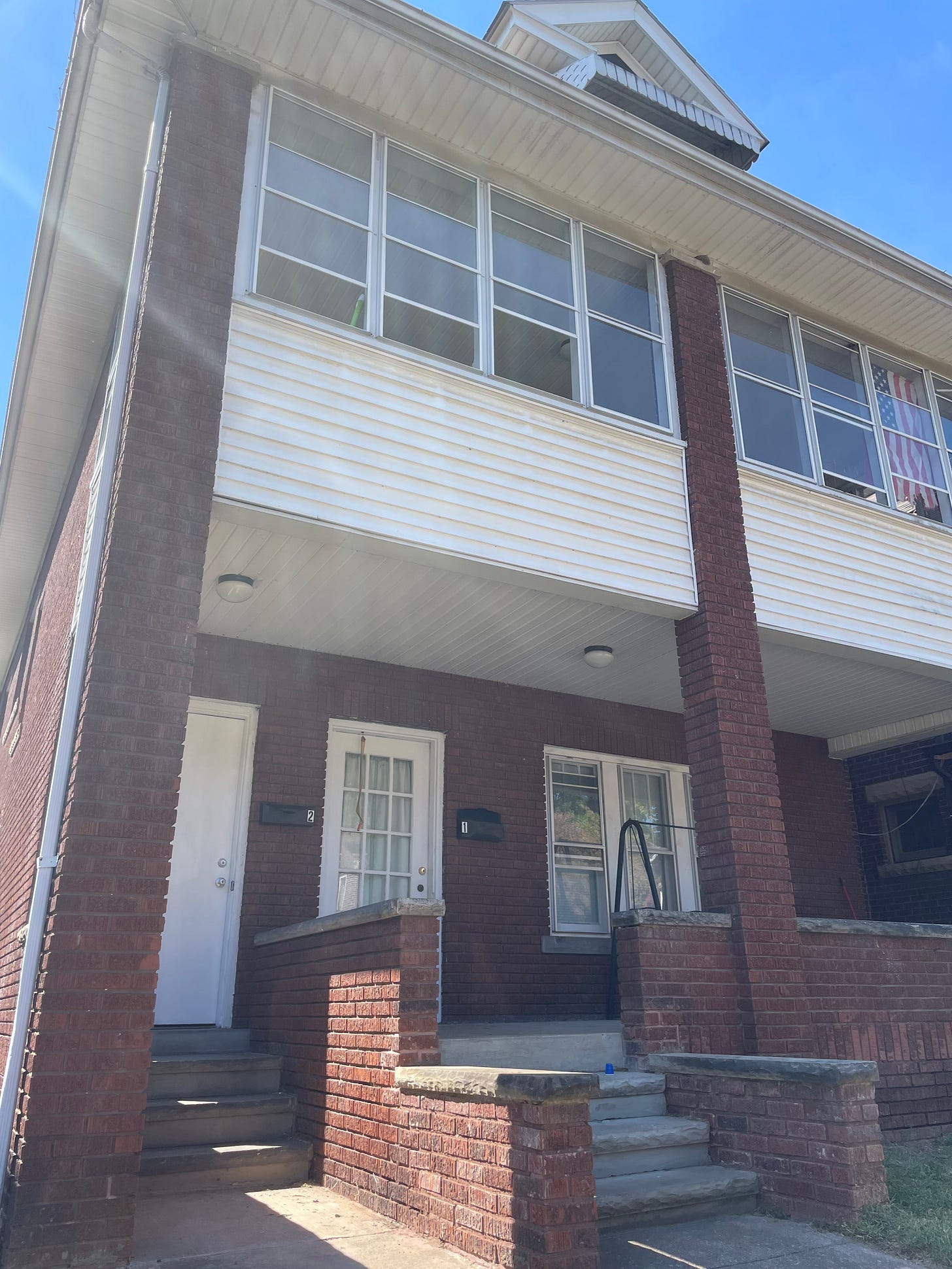Hello from Huntington, West Virginia, specifically from the top floor of a house that has been turned into one of three apartments, which is my home for at least the next year. As many West Virginians have told me, Huntington can be a mixed bag. It’s West Virginia’s second largest city (at only ~47,000 or so people), home to Marshall University (WV’s 2nd-largest public university), a thriving live music scene (Bob Dylan is coming here next month!), one of the highest rates of opioid addiction in the country, and also my employer, the ever-growing Coalfield Development. Our slogan is “Rebuilding the Appalachian economy from the ground up,” and I’m in an Americorps position on the Reuse Team (our sub-slogan is “Recycling isn’t political, it’s Appalachian!”).
Having only actually been here for three days, my impression of the city so far is simply: it’s changing. All cities change, but in a city that’s smaller than the suburb I grew up in, you can feel it more deeply. It seems like everywhere I look things are changing – my workplace is getting massive federal grants but now we actually have to carry them out, coffee shops down the street are closing and reopening, people are relapsing, people are recovering, one of my neighbors says our block has “fewer people screaming at each other on the street lately.” I’m choosing to watch for places of positive change, because I’ve found really good people there so far.
People keep asking me what exactly I do, and I keep telling them that I will let them know when I find out. I’ve been on the job for two weeks and most of that has been remote, so I don’t know what my main projects will be. Allegedly, my job is helping to build some logistical infrastructure to create what my boss calls a “reuse corridor” in the Ohio River Valley – here’s where Huntington is on a map, at the intersection of the Ohio, West Virginia, and Kentucky state borders, which are all split up by the Ohio River, like a pie cut into thirds. I found this map on a fanfic posting board for the Vampire Diaries - if someone can explain why this is related to TVD I will be grateful.
This intersection of the three states is part of the longer Ohio River Valley and is also called the Tri-State Area (*cue Dr. Doofenshmirtz cackle*). The Tri-State Area is fairly rural, with Huntington being one of the larger metropoles, and thus there isn’t very convenient recycling infrastructure right now, especially for large unwieldly materials like old lumber, sawdust, mattresses, or TVs. When counties or cities do collect recycling in this area, it’s generally shipped elsewhere to actually be recycled, if it’s effectively recycled at all. What if we could do that locally? As in, what if there were facilities where people could drop off plastic and we could, on site, melt that plastic and mold it into table coasters or roofing material or chairs that we then sell? What if there was a more efficient transportation corridor where one organization could collect sawdust from three different construction or carpentry operations and transport and sell all that sawdust to a series of farms to be used for compost? We have small-scale versions of this going on at Coalfield Development’s Reuse Program already (e.g. old lumber from house deconstructions going to our carpentry team to be made into signage or furniture or flower beds). But there are other orgs in the area looking to do the same thing, and how silly would it be if we were all trying to do the same thing separately, wondering “Why don’t we have any help?”
Anyway, this is not going to go from being an Appalachian journalism newsletter to being a newsletter about recycling in the greater Ohio River Valley (though if my employer wants to pay me to run said newsletter I am more than capable). This is mostly a brief interlude so I can explain the context I’ll be blogging from. As usual what I’m really interested in are the politics and the feelings of environmental issues — folks living in Appalachia have been recycling and reusing things for centuries, as people with a history of subsistence farming and self-reliance do anyway. The question is how to get people excited about it as a community project—and how to make it convenient, not just another especially nagging thing on the to-do list. So that’s what I’m in Huntington to do for the next year (after that, who knows!) but I’m also freelancing on the side as a journalist, and doing fact-checking and some minor writing for the Oxford American Magazine’s music issue (if you’re wondering how that’s going, last week I googled “what are parts of drum called”).
Here's my latest article, from The Daily Yonder: https://dailyyonder.com/echoes-of-coal-in-west-virginians-resistance-to-mountain-valley-pipeline/2023/10/04/. I am trying to get a minor correction made to the map and the abandoned mine land figure so there will be a slight change to this article to make it more accurate, but the link will remain the same.
Till next time,
Hannah







